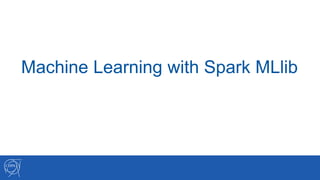This document discusses machine learning with Spark MLlib. It describes machine learning as a branch of artificial intelligence that uses computing systems to extract patterns from data. It distinguishes between supervised learning, where predefined outcomes are known, and unsupervised learning, where hidden patterns are explored without known outcomes. The machine learning process is outlined as defining objectives, preparing data through normalization and feature engineering, building models, evaluating models, and deploying selected models. Key aspects of data preparation and feature engineering are emphasized to ready data for modeling.








